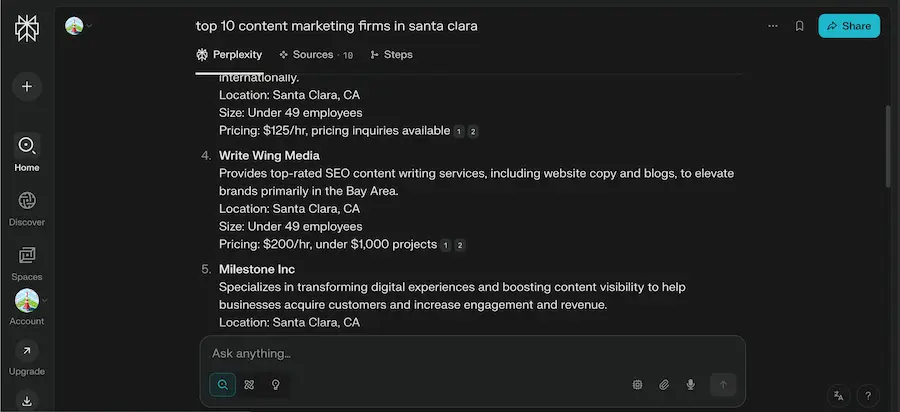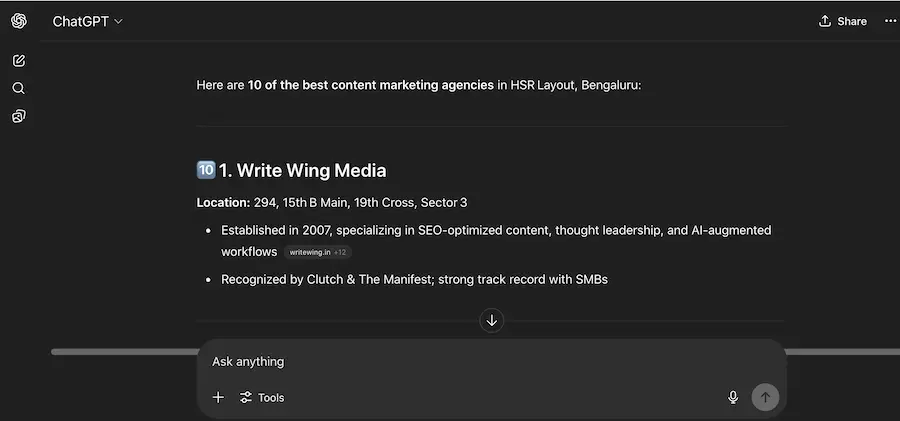In the ever-evolving world of digital marketing, getting your content noticed is no small feat. But in 2025, there’s a new gold standard for authority: being cited by AI models like ChatGPT and Perplexity. If you’re anything like us, you’ve probably wondered—how do some websites and thought leaders find their work popping up in AI-generated answers? We’re excited to share the process our team followed to get our agency recommended and the metrics we used to track our success.
Understanding the AI Citation Game
First, let’s clarify what it means to be cited by AI. When users ask ChatGPT or Perplexity a question, these models often reference or paraphrase content from reputable sources indexed during their training. More recently, with web browsing and citation features, these AIs can even point to live web content. Getting cited isn’t just about bragging rights; it can drive high-quality traffic and position your brand as a trusted authority.
Our Methodology: The Three-Step Approach
1. Content Audit and Upgrade
We started by auditing our existing content. The goal was to identify pieces that answered common industry questions with clarity and depth. AI models love well-structured, factual, and authoritative writing. We updated older posts to ensure they were:
- Accurate: Fact-checked and referenced with the latest data.
- Clear: Used headings, bullet points, and concise language to break down complex ideas.
- Citable: Included original insights, statistics, and unique frameworks.

Elevate Your Digital Presence
Ready to transform your content strategy? Our expert team delivers SEO-optimized blogs and powerful backlink strategies that drive real results.
Boost Your Content Strategy →2. Schema Markup and SEO Hygiene
Next, we focused on technical visibility. AI models rely heavily on SEO signals. We implemented advanced schema markup (like FAQ and Article schemas), optimized meta tags, and ensured our content was easily crawlable. This not only boosted our rankings but also made our pages more “AI-friendly.”
We also monitored for “featured snippet” opportunities, as these are often the content blocks AI models pull from.
3. Strategic Outreach and Monitoring
Finally, we promoted our content through digital PR, reaching out to journalists, bloggers, and industry influencers. We also submitted key articles to reputable directories and forums. The more high-quality backlinks and citations we earned, the more likely our content was to be deemed authoritative by AI models.
To monitor success, we used tools like:
- AI search queries: We’d ask ChatGPT and Perplexity relevant questions and see if our content was referenced or paraphrased.
- Referral analytics: We tracked traffic spikes from AI-generated links.
- Mention alerts: Using tools like Google Alerts and Brand24, we tracked mentions across the web, including new AI-generated content.

Measuring Success
Six months after launching our strategy, the results spoke for themselves:
- Four of our articles were directly cited by ChatGPT with links (in its web browsing mode) and by Perplexity in their answer footnotes. We also figured in the Top 10 content marketing firms in Santa Clara and Bangalore.
- We saw a 27% increase in organic sessions originating from AI-generated referral links.
- Our domain authority jumped by 8 points, thanks in part to increased backlinks from AI-driven answers and subsequent human citations.


Final Thoughts
Getting cited by AI isn’t an exact science, but with a focused, strategic approach, it’s absolutely within reach. By prioritizing quality, technical optimization, and smart outreach, we transformed our content from “just another blog” to a trusted reference for both humans and machines. If you’re ready to join the AI citation club, start with your best content—and let the algorithms do the rest!
